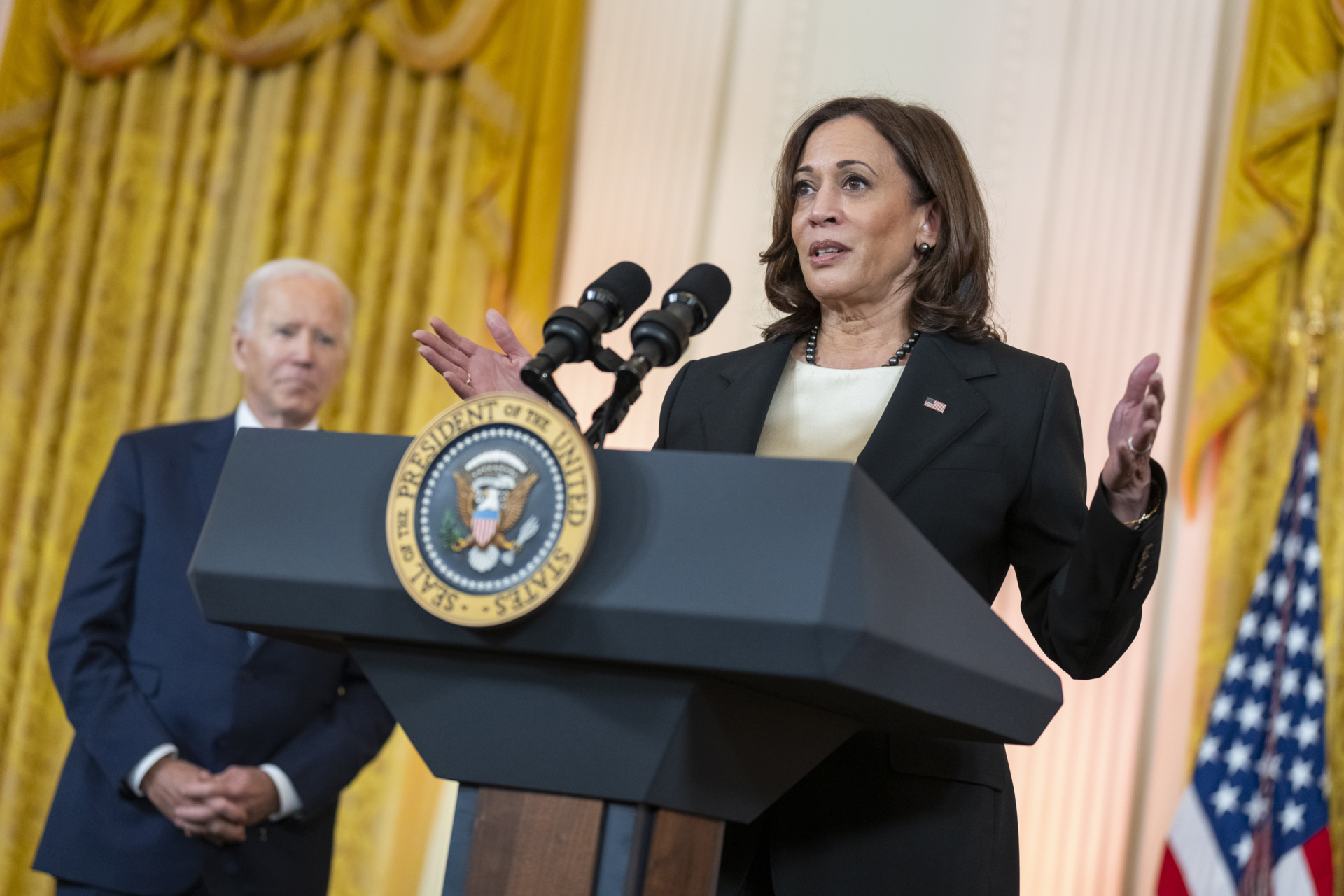October’s Jobs Disaster Undermines Harris’s Economic Claims
The economy delivered some rough justice to the campaign of Kamala Harris on Friday in the form of the monthly jobs report.
Harris has inherited from Joe Biden the habit of claiming Donald Trump bears responsibility for the job losses that the economy suffered during the pandemic. Biden won the White House arguing that what he said was Trump’s mishandling of the pandemic had wrecked the economy—even though the economy was recovering much faster than anyone not named Larry Kudlow thought possible.
What happened next is a story we’ve told many times before. After running on the idea that the economy was in ruins while Trump was president, Biden could not let the economy continue to recover without significant additional stimulus. So, his administration attempted to push through trillions of dollars of new spending under the slogans the American Rescue Plan, the Bipartisan Infrastructure Law, the Build Back Better Act, and the American Families Plan.
Fortunately, Biden’s larger ambitions were thwarted and only a fraction of the dreamed-of expenditures were enacted into law. But the results were bad enough: the worst inflation in forty years, soaring interest rates, the least affordable housing market in generations, and a crisis of confidence in our economy that even full employment and several quarters of rapid growth could not cure.
Harris’s Misguided Attack on Trump’s Manufacturing Record
It never really made much sense for the Democrats to complain about the pandemic job losses. The extended lockdowns and school closures many on the American left supported would have resulted in even worse economic outcomes. The U.S. economy recovered much faster than many other developed economies, in part because of the measures enacted during Trump’s presidency. Neither Biden nor Harris has ever explained what measures they might have taken that would have decreased the impact of the pandemic.
Not surprisingly, the Harris campaign was never going to let historical accuracy or economic logic stand in the way of attacking her rival for the White House. Harris took aim at Trump’s record on manufacturing in particular, claiming that during the Trump years the U.S. economy lost hundreds of thousands of manufacturing jobs. Harris also frequently claimed that the Biden policies had led to a boom in manufacturing.
At a rally in Michigan last month, Harris said, “America lost nearly 200,000 manufacturing jobs” under Trump.
In reality, the economy had 178,000 fewer manufacturing jobs when Trump left office in January of 2021 than when his presidency began. But prior to the pandemic, manufacturing employment had grown by over 430,000 jobs while Trump was president. And from the depths of the pandemic closures in 2020, the economy added back 769,000 manufacturing jobs in just the last few months of Trump’s presidency.

Vice President Kamala Harris delivers remarks on October 24, 2022, in the East Room of the White House with President Joe Biden looking on. (Official White House Photo by Adam Schultz)
Under Biden and Harris, manufacturing employment did not recover to the pre-pandemic Trump level until the summer of 2022. Shortly afterward, growth in manufacturing jobs fizzled out. At its peak under Biden-Harris, the manufacturing sector employed 12.95 million, just 126,000 more than under Trump’s peak.
At that Michigan rally, Harris also claimed that manufacturing job losses had already begun before the pandemic struck. When asked by CBS News to back up this claim, a spokesperson for the Harris campaign pointed to a decline of 48,000 manufacturing jobs from January 2019 and February 2020.
Ironically, this figure almost matches the jobs lost in manufacturing just last month. According to the Bureau of Labor Statistics, the economy shed 46,000 manufacturing jobs in October. This was the third consecutive month of jobs lost in the manufacturing sector, bringing the three-month total to 78,000. The economy has lost manufacturing jobs in seven of the last 12 months and is down 31,000 from last October.
Blame It on the Rain
The Harris campaign has been quick to dismiss the jobs numbers for October on the grounds that they were likely impacted by the hurricanes and the ongoing Boeing strike. While both are true, the political party that blamed Trump for the results of an exogenous pandemic cannot so easily ask voters to ignore the effects of weather, especially when we have no idea how many jobs the hurricanes may have cost.
You live by the exogenous variable sword, you die by the exogenous variable sword. And remember that the estimates of more than 100,000 jobs included estimates of hurricane and strike effects. In other words, we fell well short of expectations even with the strike and hurricanes included.
In any case, the Institute for Supply Management‘s survey of the manufacturing sector showed that activity contracted for the seventh consecutive month and has contracted in all but one month for two years; so, this is not just an anomalous report that can be swept aside. Production dropped to the weakest reading since April of 2021. Demand remains “subdued,” according to ISM, and companies show an unwillingness to invest in capital and inventory for fear of a resurgence of inflation or other policy errors.
Harris, Biden, and their allies in the legacy media have tried nonstop for three years to convince Americans that the economy is healthier than opinion polls and consumer surveys indicate. Friday’s jobs numbers make it much harder for Harris to argue that Democrats will be effective stewards of the U.S. economy.
